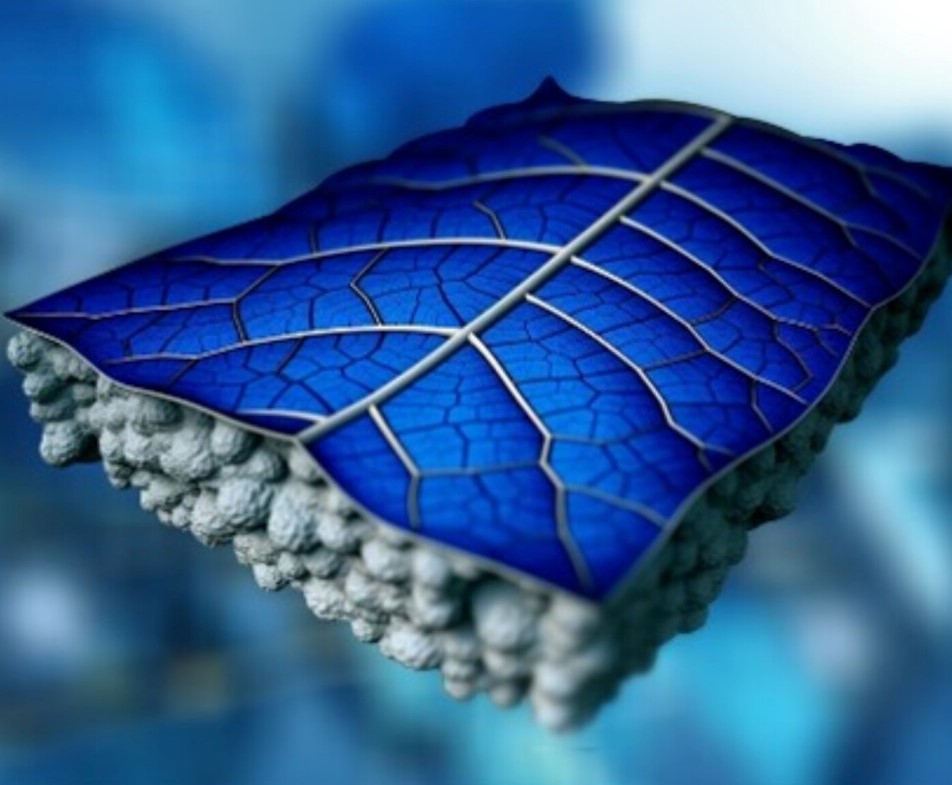Researchers at the Imperial College London have developed a new photovoltaic leaf (PV-leaf) concept that is able to produce electricity, thermal energy, and water.
In the study “High-efficiency bio-inspired hybrid multi-generation photovoltaic leaf,” published in nature communications, the research team described the system as a hybrid multi-generation PV-leaf based on a biomimetic transpiration structure made of bamboo fibers and stacked hydrogel cells.
The 1 mm thick biomimetic transpiration (BT) layer moves water passively from a separate water tank onto a 10 cm × 10 cm solar cell placed on top of the structure. The water flowing onto the cell is able to reduce its operating temperature, thus increasing its efficiency, and excess heat is used to produce water and thermal energy. The PV leaf is protected only by a 0.7-mm thick high-transmittance glass layer.
The structure utilizes vascular hydrophilic fiber bundles that uniformly distribute water through the PV-leaf. Hydrogel cells are used to mimic the vascular bundles and sponge cells. “In the BT layer, around 30 branches of bamboo fiber bundles are homogeneously embedded into the potassium polyacrylate (PAAK) superabsorbent polymer (SAP) hydrogel cells, distributing water over the entire area covered by the BT layer,” the scientists explained, adding that the edges of the fiber branches are gathered together and soaked in water.
The scientists measured the performance of the system under standard illumination conditions and compared it to a reference standalone PV cell cooled by natural air convection. They found that the PV-leaf reached a temperature of 43.2 C, while that of the reference cell reached 68.8 C. “The temperature of the non-insulated water tank is close to the ambient temperature and has a slight influence on the cooling performance,” they stated.
Popular content
The PV-leaf achieved a power conversion efficiency of 15.0%, an open-circuit voltage of 0.63 V, and a fill factor of 0.77. The reference cell, by contrast, achieved an efficiency of 13.2%, an open-circuit voltage of 0.58 V, and a fill factor of 0.75.
The academics also said the capital cost of the additional components required by the PV-leaf, is approximately 1.1 $/m2, which represents around 2% of the cost of conventional solar panels. The payback time of the additional components is estimated at less than half a year. “The PV-leaf concept can be upscaled to larger-scale collectors, beyond which even larger solar plants of a commercial size can be divided into several small areas allocated to separate, interconnected PV-leaves,” they added referring to their possible applications in real projects.
“Compared to previous studies on transpiration cooling, the solution in this work does not require pump, control unit, expensive porous materials, and is able to cool the target surface to a significantly lower temperature, which is suitable for multi-generation applications, as well as applications of thermal management for PV cells,” the UK group said, noting that the system may also use seawater instead of freshwater. “Simulation results show that PV-leaf has better transpiration performance in hot and dry climates.”
The academics also claim that the device may be able to generate an additional 1.1 L/h/m2 of freshwater under a solar irradiance of 1000 W/m. They also believe that the system may also use seawater instead of freshwater. “Simulation results show that PV-leaf has better transpiration performance in hot and dry climates,” they emphasized.
This content is protected by copyright and may not be reused. If you want to cooperate with us and would like to reuse some of our content, please contact: editors@pv-magazine.com.



Photovoltaic leafes. Can it be ordered in size. How should it be mounted, put up?. How many volts? More about that and the posebilety of heating water. Price sizes n so on.. Very curius.